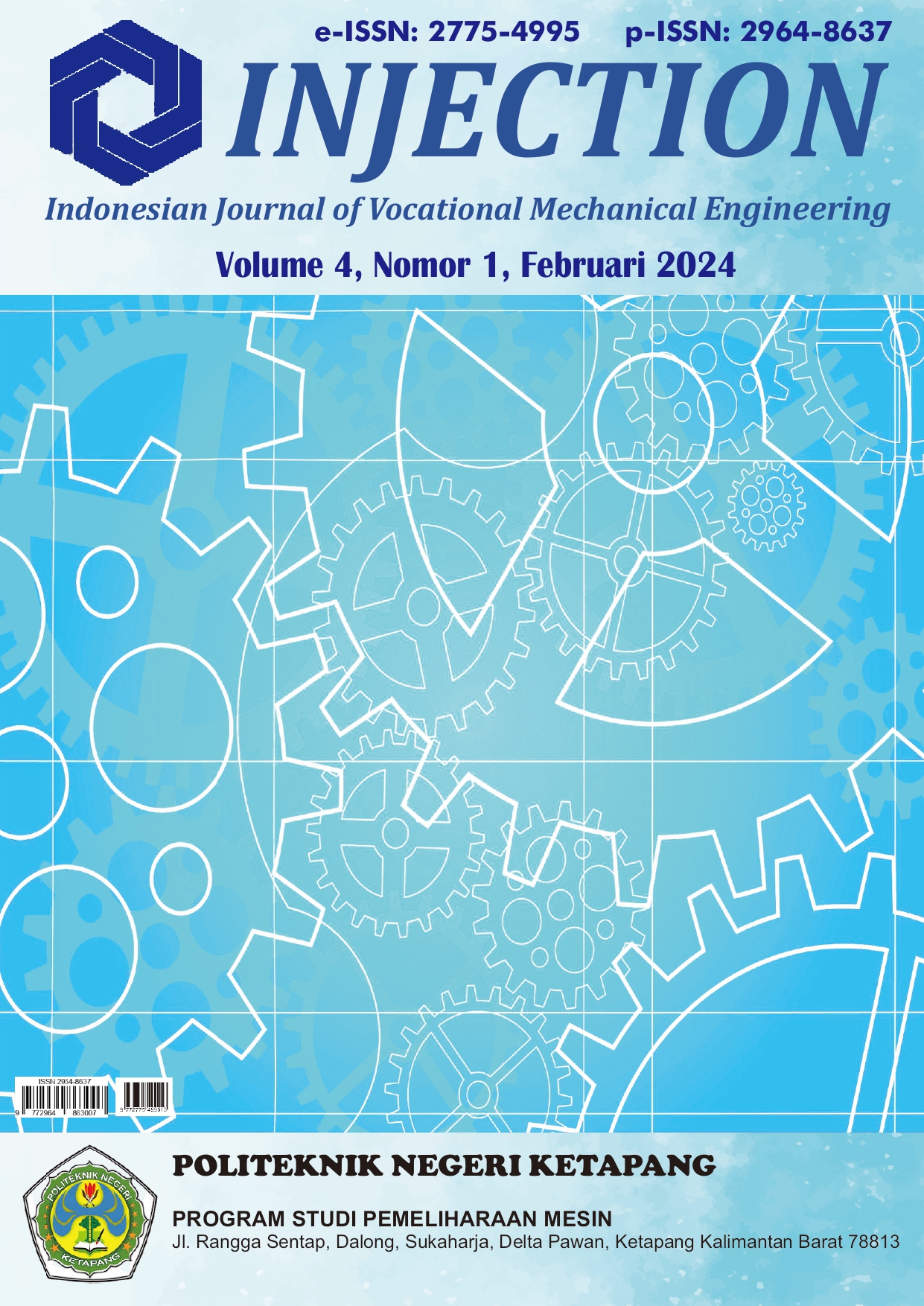ANALISIS EFISIENSI THERMAL TERHADAP ENGINE TURBOFAN PESAWAT BOEING 737-500
 https://doi.org/10.58466/injection.v4i1.1777
https://doi.org/10.58466/injection.v4i1.1777
Keywords:
Thermal Eficiency, Turbofan Engine, Boeing 737-50Abstract
Thermal efficiency is a dimensionless measure that shows the incoming heat is the energy obtained from the energy source. The cooled output may be either heat or work, or it may be both. The CFM56-3 engine is a turbofan jet engine with large bypass capacity, dual rotor used with advanced axial flow technology designed for use on BOEING737 aircraft and all its variants. The purpose of this study is to determine the thermal efficiency of a turbofan engine, the causes of decreased performance of a turbofan engine and efforts to overcome it. This research is a qualitative and quantitative research using primary data and secondary data. Data collection techniques used are field studies, literature studies, as well as discussion and problem analysis. The field study in this research is to make direct observations of the processes that occur in the field. The results of this study can be concluded that the thermal efficiency of the Boeing 737-500 aircraft occurs the higher the difference between the incoming energy and outgoing energy through the compressor is 49.11% and the turbine is 64.01% the system produces the ideal thermal efficiency value of the Brayton cycle of 70 ,51% produced will be higher while the actual thermal efficiency of the Brayton cycle of 44.0% has decreased compared to the ideal thermal efficiency. The comparison of the ideal thermal efficiency of the Brayton cycle and the actual thermal efficiency of the Brayton cycle is 26.51%, meaning that efficiency can still be increased by as much as possible returning the component dimensions to their proper condition. The cause of the decreased performance of the turbofan engine is a change in dimensions due to frictional materials; wear and tear caused by continuous operation; as well as incorrect operating steps on the turbine engine and efforts to overcome them are periodic inspections of each turbofan engine components and using accurate measuring instruments
References
Arismunandar, Wiranto. 2000. Pengantar Turbin Gas dan Motor Propulsi. Bandung: ITB.
Cengel, Yusuf A. 1994. Thermodynamics: An Engineering Approach 5th edˆ. USA: Mc Graw-Hill.
CFM International. 1995. CFM56-3 Basic Engine Training Manual. CFM International.
Cohen, Roger, Saravanamuttoo. 1978. Gas Turbine Theory 2 nd ed. London: The Chauser Press.
Farooq Saeed. 2004. Aero-Thermodynamics Of Turbo machinery For Jet Propulsion. Dipublikasikan di www.google.com pada tanggal 18 Agustus 2008.
Fitria. 2013. “Audit Energi Pada Gas Turbin Generator (GTG) Untuk Produksi Energi Listrik (Studi Kasus Di PT. Petrokimia)” Audit Energi Pada Gas Turbin Generator (GTG) Untuk Produksi Energi Listrik (Studi Kasus Di PT. Petrokimia).
Hasanudin. 2009. Analisis Pemakaian Bahan Bakar Pada APU GTCP85-129. Jakarta: Teknologi Industri Teknik Mesin.
Naryono. 2013 “Analisa Efisiensi Turbin Gas Terhadap Beban Operasi PLTGU Muara Tawar Blok 1, Vol.2"/ Analisa Efisiensi Turbin Gas Terhadap Beban Operasi PLTGU Muara Tawar Blok 1, Vol.2.
Purnomo, Muhammad Jalu. 2015. Analisis Pemakaian Bahan Bakar (SFC) Mesin Lycoming O-360-A1ad Saat Terbang Di Ketinggian 13500 Ft. Yogyakarta: Teknik Penerbangan U.S. Department of Transportation. Aviation Maintenance Technician Handbook.
Saputro. 2006. “Kajian Unjuk Kerja Pembangkit Listrik Tenaga Gas G4."
Sunaryo. 2016. “Analisa Efisiensi Turbin Gas Unit 1 Sebelum Dan Setelah Overhaul Combustor Inspection Di PT. PLN (PERSERO) Sektor Pembangkit PLTGU Cilegon : 50-57"/ Analisa Efisiensi Turbin Gas Unit 1 Sebelum Dan Setelah Overhaul Combustor Inspection Di PT.







